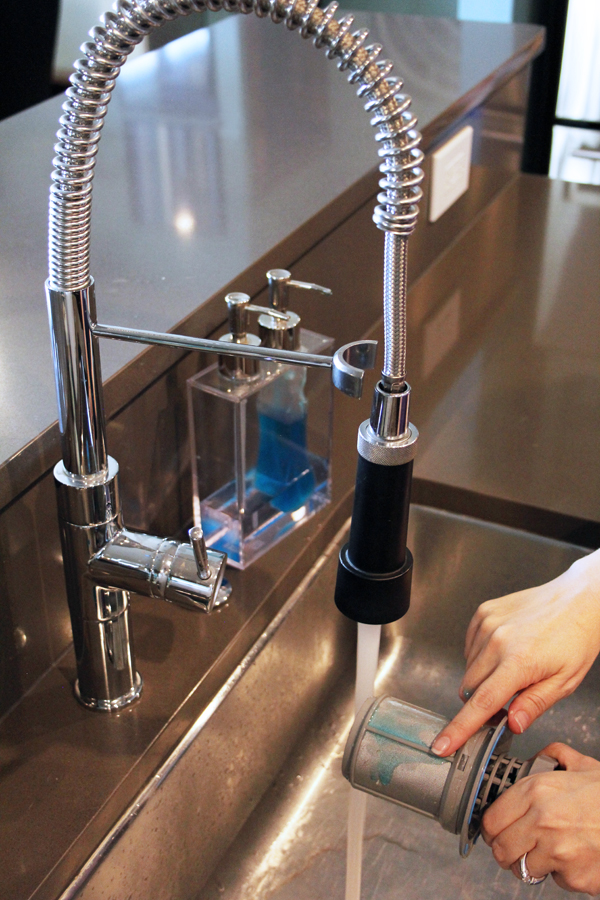
Clean the Dishwasher DrainNext, remove the dishwasher drain cover. Mine just lifted up, but in some models you may need to locate a latch to release it.
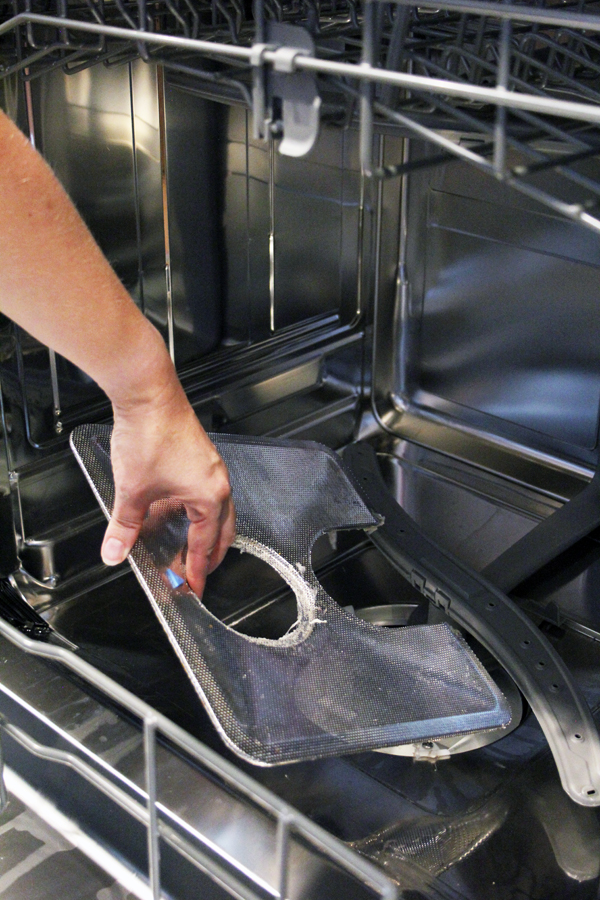
The underside of the drain cover will likely look something like this {gross!}.
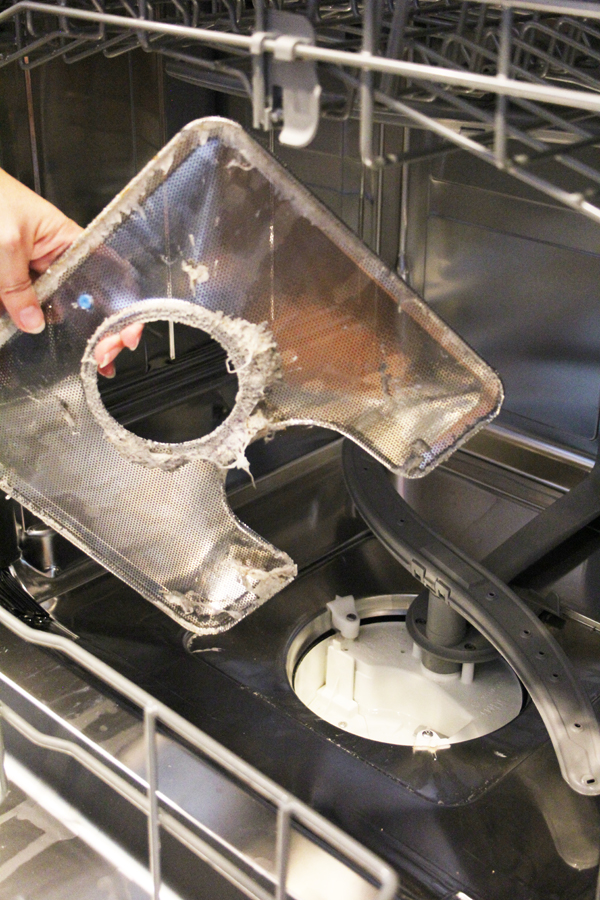
Rinse off as much as you can using hot water, and then use an old toothbrush and a little dish soap to remove the remainder of the gunk and get all the crevasses clean.
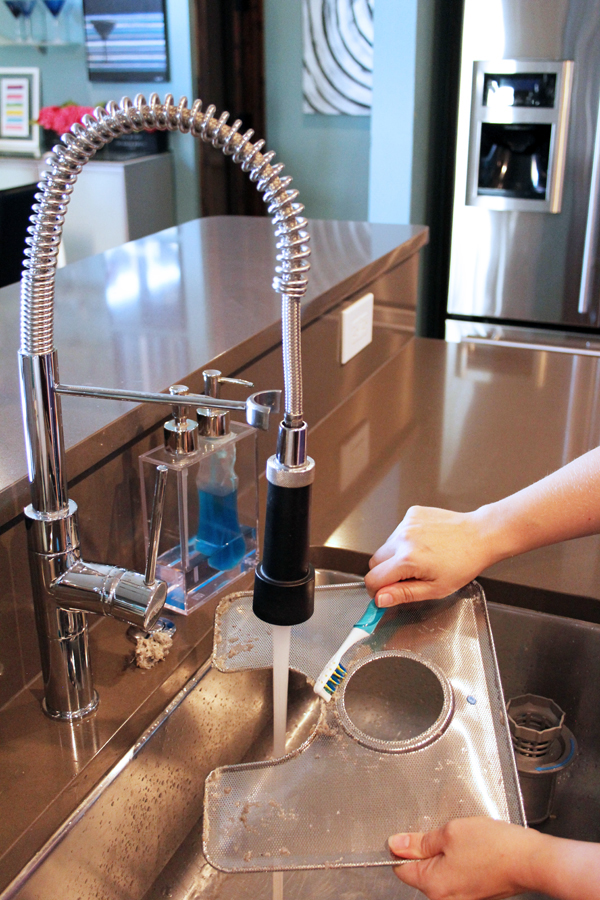
In less than five minutes, both my dishwasher filter and drain cover were sparkling clean.
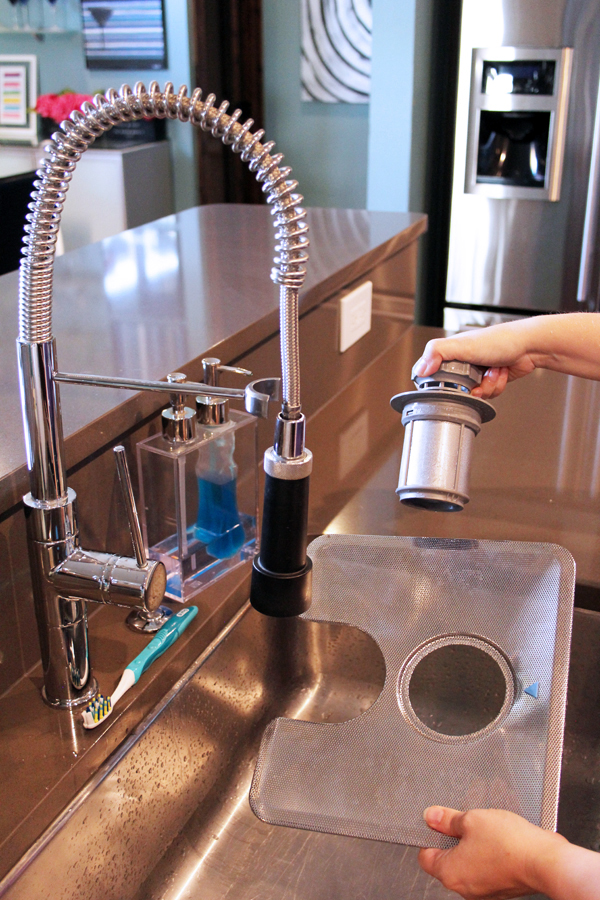
Before replacing the drain cover, look down inside the drain and remove anything that may have collected in there. I actually found a small piece of broken glass in mine – so be careful when reaching in there.Check the Dishwasher SealThe seal around the edge of the dishwasher is what keeps the water inside the machine during the cycle. Use warm water to dampen a cloth and wipe it down to remove any dirt or food particles that might impede the seal. Once it’s clean, give it a good once over to check for any cracks or damage to the seal that might later result in water leaking out.
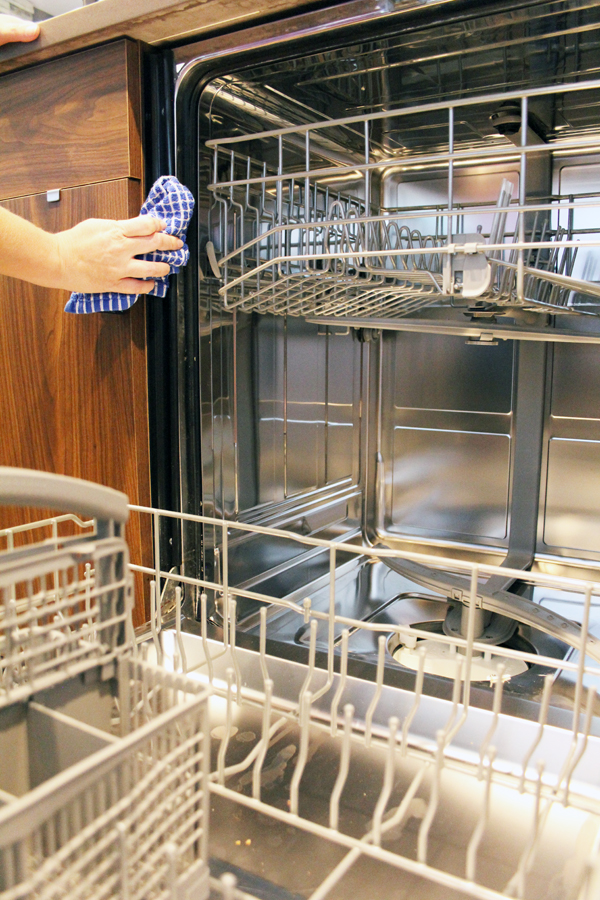
Clean Water Spray ArmNext, check the spraying arms to make sure no food particles are blocking the flow of water.
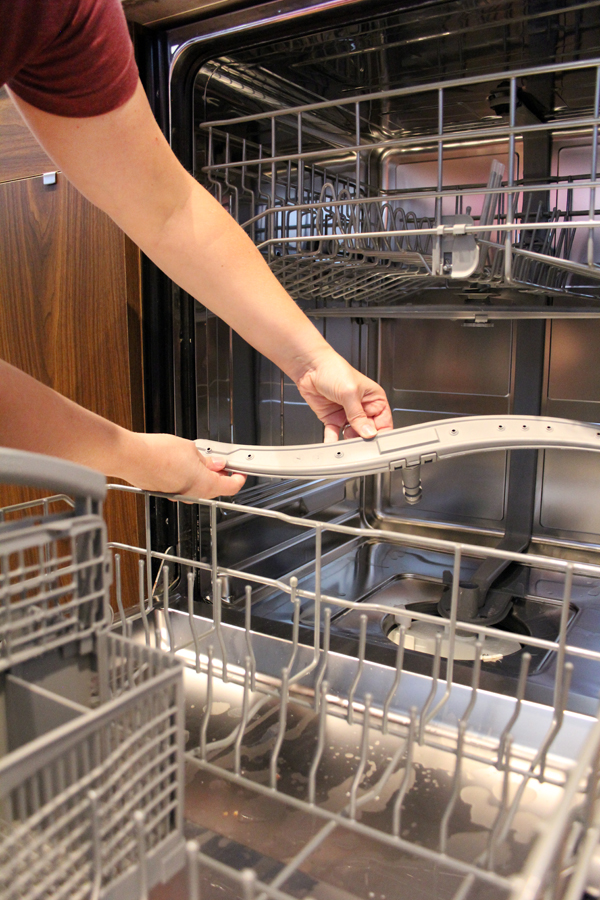
If necessary, use a toothpick to clear the sprayer holes to ensure good water flow.
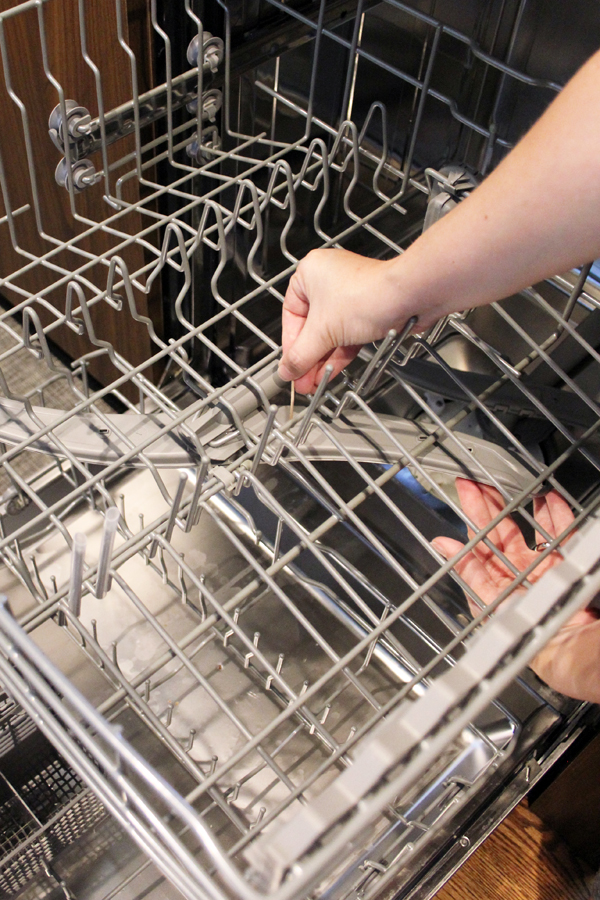
Clean the Dishwasher with VinegarRecently my plumber recommended that I should be using vinegar to clean just about every spot in my house that has a drain. I did some research to find the best way to use it to clean and deodorize our dishwasher, and found a variety of recommendations. One common method is to place a bowl full of vinegar on the top shelf of an otherwise empty dishwasher and then run a clean cycle with no detergent.
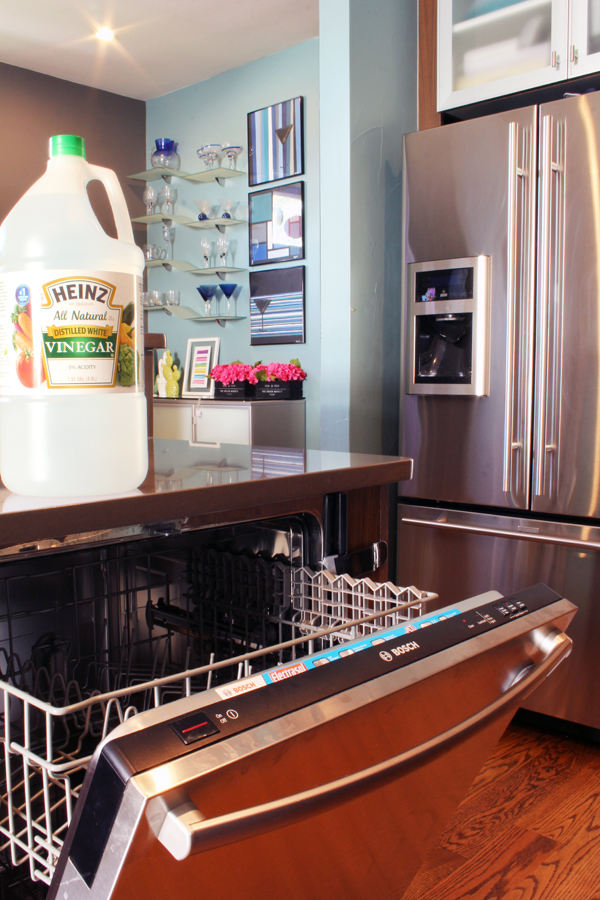
But after reading pros and cons of different vinegar methods, I opted to instead start a regular wash cycle with a completely empty dishwasher (and no dish soap). Once the bottom of the machine has filled with hot water, paused the cycle, open the door, pour 2 cups of vinegar into the bottom, close the door and let it sit for 30 minutes, and then finish running the cycle. This vinegar method removes any built up grease and grime, and leaves the dishwasher smelling fresh.
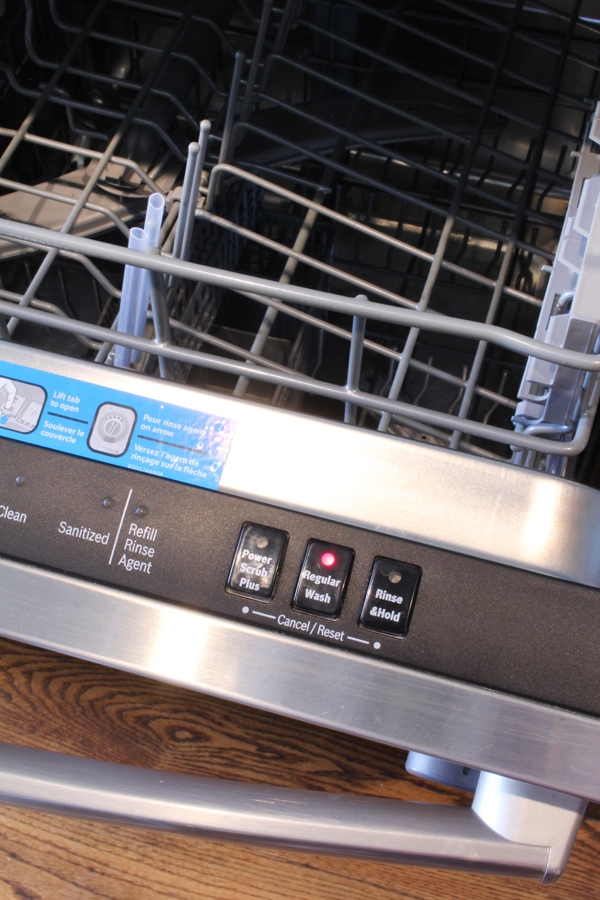
Important Note: I also read a number of recommendations for placing vinegar in the rinse aid compartment of the dishwasher so that it’s released slowly over time to help get dishes and glasses nice and clean. However, my research suggests that placing vinegar directly in the rinse aid compartment can actually damage the rubber components of this compartment, so I decided not to try this method. Be sure to refer to your dishwasher manual to determine what is appropriate for your machine.Clean the Dishwasher with Baking Soda
Finally, sprinkle about a cup of baking soda across the bottom the empty dishwasher. Run a short, hot-water cycle (again with no detergent). The baking soda method will help to remove any stains and will leave the inside of the dishwasher sparkling clean.
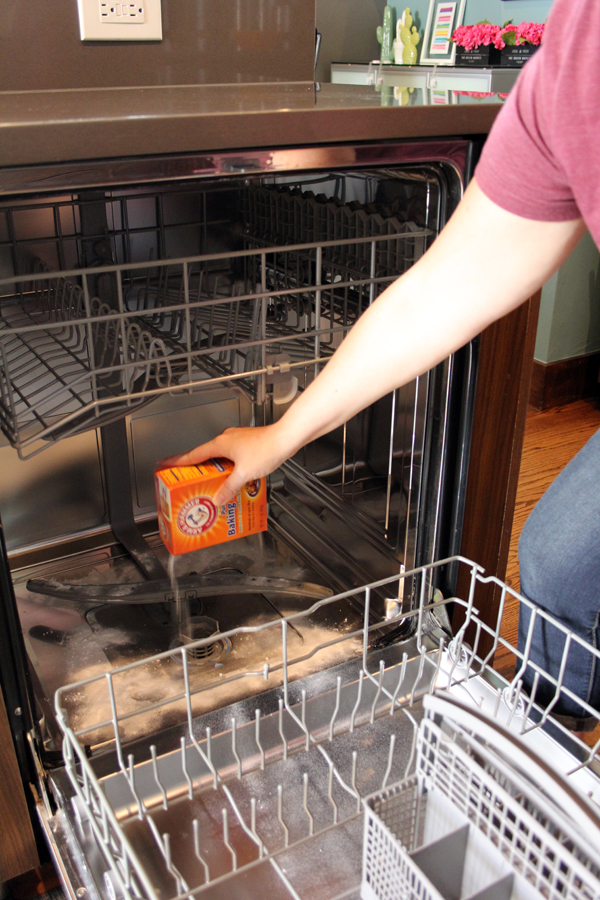
I didn’t realize how dirty our dishwasher really was until I started to clean it. Now that I know, I definitely won’t wait so long next time!
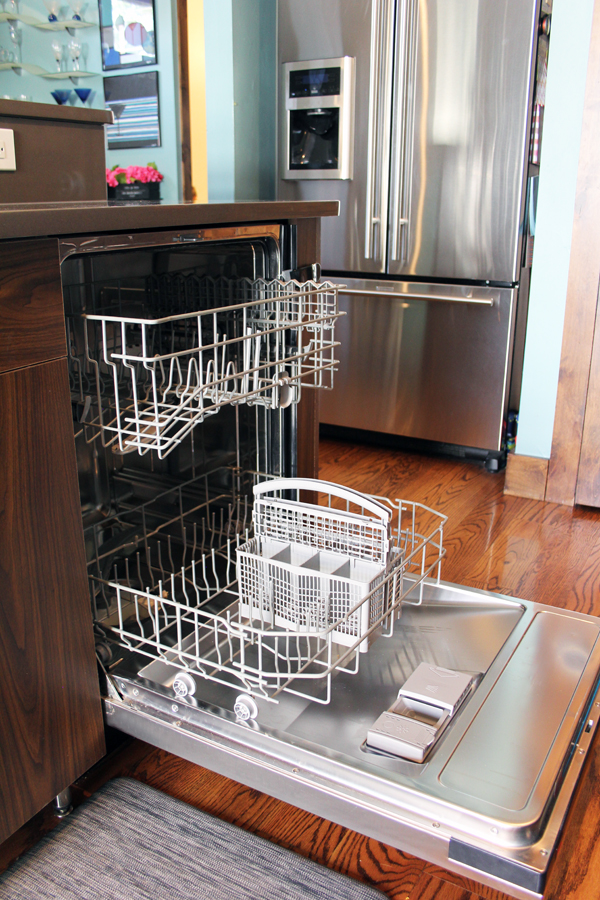
In the future, I’ll definitely be cleaning the filter and checking that the drain area is clear on a regular basis (every week or two), and then I’ll use vinegar any time I start to notice a musty smell, and baking soda any time the inside starts to look a bit grimy or dingy!
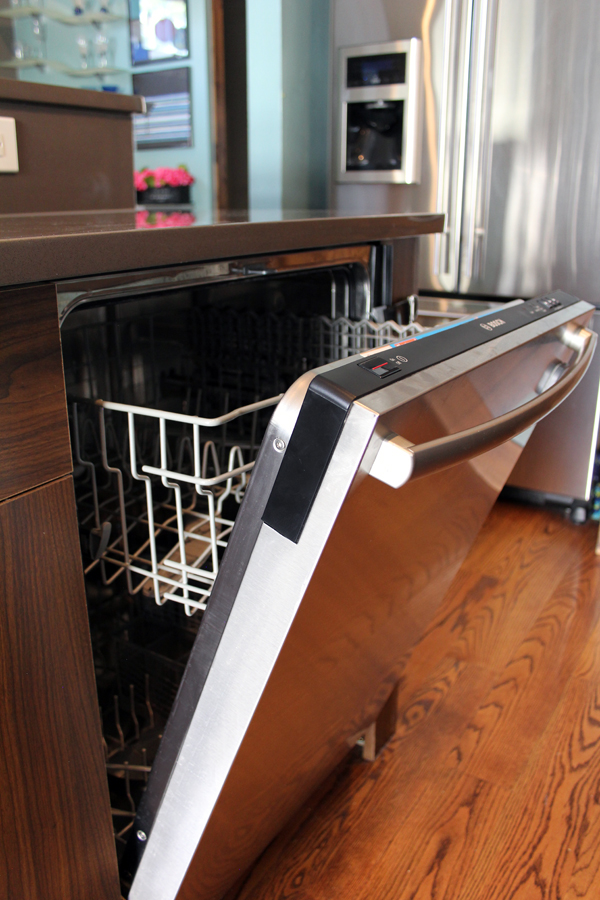
Be sure to pin the image below so that you can find your way back to these dishwasher cleaning tips!

Leave a Reply